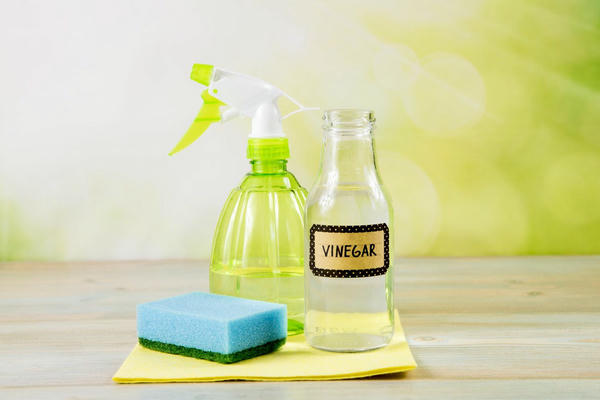
Commercial cleaning environments demand solutions far beyond standard household products. Dealing with stubborn grease buildup, industrial oils, food residues, and tough stains requires powerful, specialized formulations. Heavy-duty degreasers and stain removers are essential tools in maintaining hygiene, safety, and appearance in commercial kitchens, workshops, garages, and other demanding spaces. Selecting the right products and using them effectively is crucial for achieving optimal cleaning results and ensuring long-term maintenance of surfaces.
Understanding Heavy-Duty Cleaning Challenges
Commercial settings face unique cleaning challenges due to the volume and nature of activities. Kitchens accumulate grease, oil, and food spills. Workshops deal with automotive fluids, lubricants, and metal residues. Industrial facilities encounter heavy dirt, grime, and process-specific contaminants. These substances bond tightly to surfaces, requiring robust chemical action to break them down and lift them away. Standard cleaners often lack the necessary strength and formulation to tackle these heavy-duty tasks efficiently.
Moreover, the sheer size of commercial areas means cleaning must be fast and effective to minimize downtime. Products need to work quickly and reliably across various surfaces like concrete, tile, stainless steel, and painted metals, without causing damage. Safety for cleaning staff and occupants is paramount, necessitating careful selection and application procedures.
Types of Heavy-Duty Degreasers
Heavy-duty degreasers typically contain strong solvents, surfactants, and alkaline builders to break down grease and oil. They can be classified by their formulation and intended use:
- Solvent-Based Degreasers: Utilize powerful solvents to dissolve grease and oil. Effective on tough, aged buildup but require good ventilation and safety precautions. Often used in industrial settings.
- Alkaline Degreasers: Contain high pH levels that saponify (turn into soap) fats and emulsify oils, allowing them to be washed away with water. Highly effective in commercial kitchens for cleaning ovens, grills, and floors.
- Enzymatic Degreasers: Use enzymes to break down organic matter like fats, oils, and grease over time. Slower acting than chemical degreasers but more environmentally friendly and safer for sensitive surfaces or drain lines.
- Natural/Bio-Based Degreasers: Formulated with plant-derived solvents or microbial cultures. Offer a greener alternative with reduced harsh chemicals, suitable for areas where strong fumes are undesirable.
Choosing the Right Stain Remover for Commercial Use
Commercial stains vary widely, from food dyes and coffee in restaurants to oil spills in garages and ink marks in offices. Effective stain removal depends on identifying the stain type and the surface it's on. Stain removers for commercial use are often concentrated and designed for specific stain categories:
- Oxidizing Stain Removers: Use oxygen to break down stains, effective on organic stains like coffee, tea, and food dyes. Common examples contain hydrogen peroxide.
- Reducing Stain Removers: Work by adding electrons to the stain molecules, often used for synthetic dyes and ink stains. Require careful application as they can sometimes affect fabric colors.
- Enzyme-Based Stain Removers: Similar to enzymatic degreasers, they target specific organic stains like blood, protein, or grass by breaking them down.
- Solvent-Based Stain Removers: Dissolve stains like grease, oil, and ink. Require good ventilation and patch testing on surfaces.
Often, a combination approach is needed. A degreaser might tackle greasy buildup around a stain, allowing a targeted stain remover to penetrate more effectively.
Benefits of Using Combo Products
Some manufacturers offer heavy-duty combo products designed to both degrease and remove a variety of stains simultaneously. These can offer several advantages:
- Efficiency: Save time and labor by performing two tasks with one product.
- Simplified Inventory: Reduce the number of different cleaning products needed.
- Cost-Effectiveness: Potentially lower overall cleaning costs by using multi-purpose solutions.
- Targeted Formulations: Combos are often formulated to tackle common commercial challenges like grease and food stain removal in kitchens.
However, it's crucial to verify that a combo product is truly effective for the specific types of grease and stains encountered and is safe for all intended surfaces.
Applications Across Industries
Heavy-duty degreaser and stain remover combos are indispensable across numerous commercial sectors:
- Commercial Kitchens & Restaurants: Cleaning floors, walls, hoods, ovens, grills, fryers, and food prep surfaces from grease, baked-on food, and stubborn spills.
- Automotive Repair Shops & Garages: Removing oil, grease, brake fluid, and tire marks from floors, tools, and equipment.
- Manufacturing & Industrial Facilities: Cleaning machinery, production areas, and floors from industrial oils, lubricants, and process residues.
- Hospitality & Healthcare: Maintaining cleanliness and hygiene standards in high-traffic areas, addressing spills and stains on floors and surfaces.
- Retail & Public Spaces: Removing spills, scuff marks, and grime from floors and surfaces in entrances, restrooms, and aisles.
Factors to Consider When Selecting Products
Choosing the right heavy-duty cleaning products involves several considerations beyond just cleaning power:
- Surface Compatibility: Ensure the product will not damage or discolor the materials being cleaned (e.g., aluminum, painted surfaces, sealed concrete).
- Safety: Look for products with lower VOCs (Volatile Organic Compounds) and less hazardous chemicals where possible. Always review Safety Data Sheets (SDS) and follow recommended PPE (Personal Protective Equipment) guidelines.
- Environmental Impact: Consider biodegradable formulations or products with reduced environmental footprints.
- Dilution Ratios: Concentrated products offer cost savings but require accurate dilution for effectiveness and safety.
- Application Method: Some products are designed for manual cleaning, while others are suitable for use with floor scrubbers, pressure washers, or foaming equipment.
- Regulations: Be aware of local regulations regarding chemical use and disposal, especially in food service environments.
Best Practices for Effective Use
Proper application is key to maximizing the effectiveness and safety of heavy-duty cleaners:
- Ventilation: Always ensure adequate ventilation when using strong chemicals.
- Patch Testing: Before applying to a large area, test the product on an inconspicuous spot to check for surface compatibility.
- Allow Dwell Time: Allow the product to sit on the surface for the recommended time to break down grease and stains before scrubbing or rinsing.
- Proper Dilution: Use the correct dilution ratio as specified by the manufacturer. Too strong isn't always better and can damage surfaces or waste product.
- Agitation: Use brushes, pads, or machines to agitate the product and help lift contaminants.
- Rinsing: Thoroughly rinse the surface to remove all chemical residue and loosened dirt.
- PPE: Always wear appropriate personal protective equipment, including gloves, eye protection, and potentially respiratory protection.
Investing in high-quality heavy-duty degreaser and stain remover combos, coupled with proper training and procedures, is fundamental to maintaining a clean, safe, and professional commercial environment. By understanding the challenges, product types, and best practices, businesses can achieve superior cleaning results and ensure long-term surface preservation.
